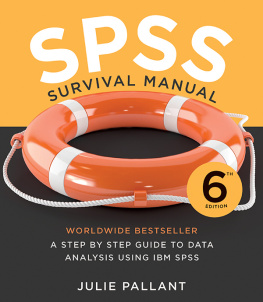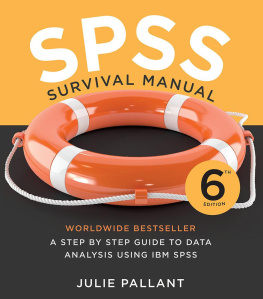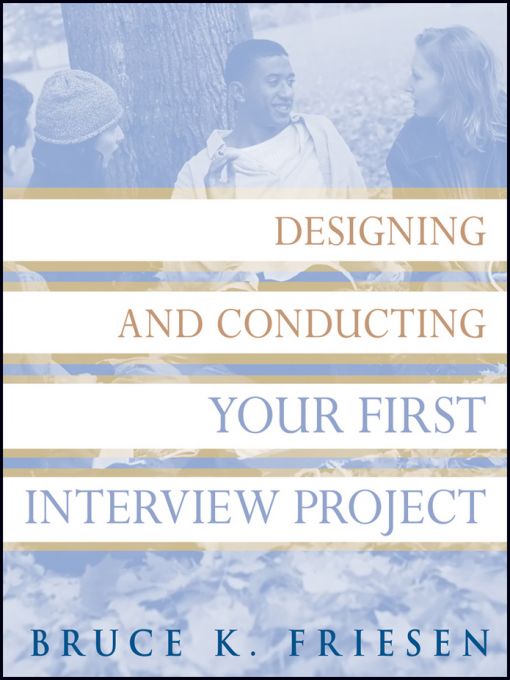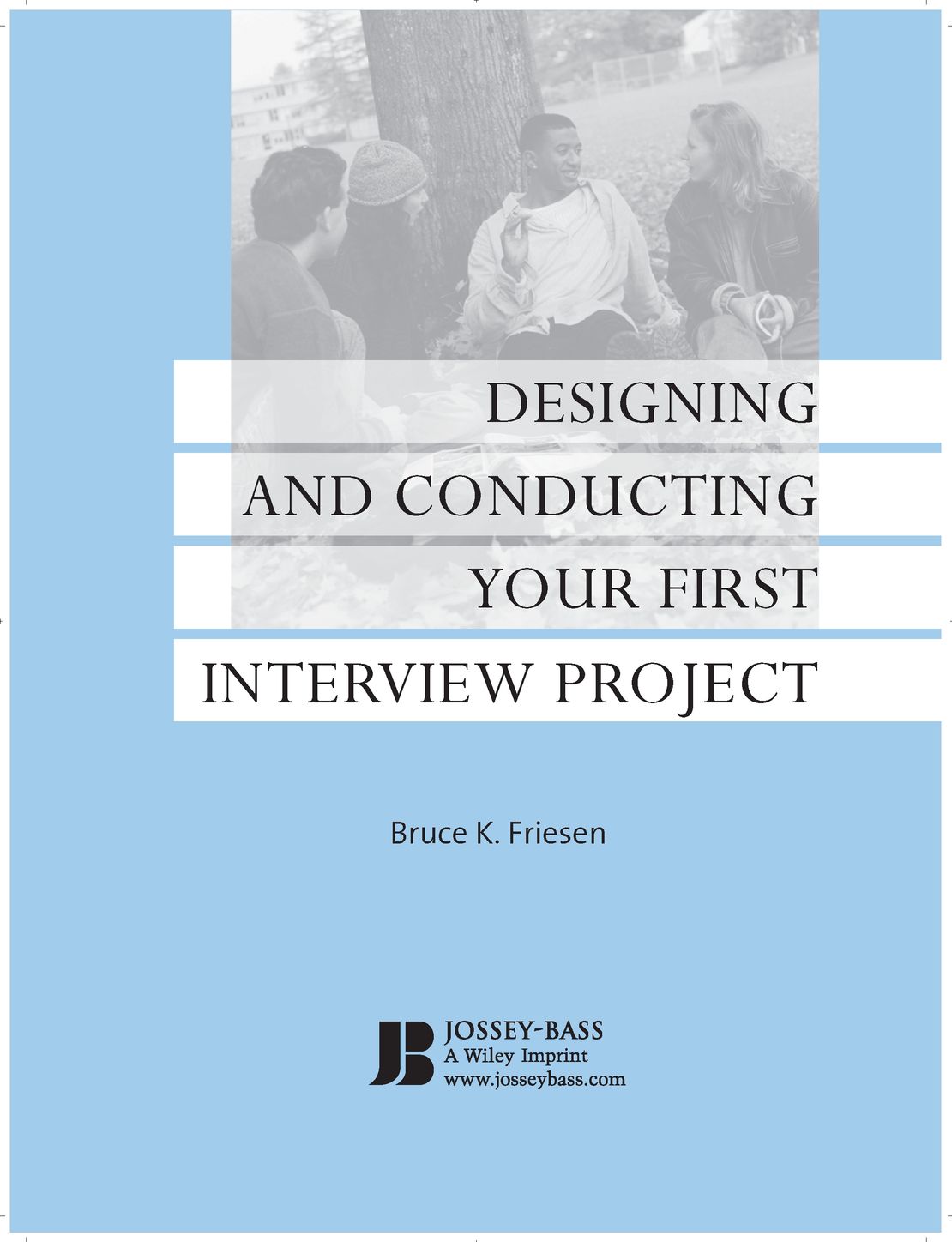Table of Contents
Table of Figures
For Brittany and Justin
PREFACE
This book aims, above all, to teach excitement through the joy of discovery. It is my contention that students learn more from doing than from listening or reading alone. Whether in a class of eight or eight hundred, students need to be given opportunities to kinetically explore the craft of sociology. Activity, accompanied by guided reflection and positive affect, stimulates engagement, internalization, inquisitiveness, and the search for answers. Through this semester-long project, students will taste what it feels like to do deductive social science. Theyll search the peer-reviewed literature, form a class hypothesis, and develop the project from conceptualization to operationalization. Theyll perform a handful of interviews, enter data into computers, and produce and analyze the results. Theyll walk out of your class with a semester full of experiences on which to reflect.
This book is a part of the paradigmatic shift taking place in how college courses are being taught. A burgeoning interdisciplinary, empirically based literature on the science of college teaching has been revolutionizing the traditional college course (see, for example, Bain, 2004; Brookfield, 1995; Fink, 2003; Finkel, 2000; McKeachie, 2005; McKinney, 2007; and Weimar 2002). Lecture-based courses are being modified to include more group discussion, case studies, student presentations, peer-to-peer instruction, dialogue, and active learning projects. Radical new perspectives, defining teaching as a form of scholarship (Boyer, 1997), have been adopted by institutions of higher education and are being integrated into the institutional reward structures for the professoriate. Full- and part-time instructors are shifting focus from a science of teaching to a science of learning. There is good reason for this sea change: active learning strategies produce a more sustained, substantial, and positive impact on how students think, act, and feel. (I am indebted to Bain, 2004, for this definition of learning.)
DEVELOPMENT
This project has gone through several iterations, having been used consistently with Introduction to Sociology classes over the past twenty years. Its been refined though use with classes as small as twelve students and as large as 330. When executed well, the project teaches the joy of discovery through deductive social science. Students are presented with the notion that their perceptions of the social world are not always what they seem to be, which invokes a teachable moment that challenges students to ask themselves questions related to knowing. Asking questions is the first step in developing the mind of a scientist. An enhanced version of this project has also been used with success in Research Methods classes for the past four years. Chapters Eleven and Twelve contain information specifically for use in upper-division classes. These chapters empower students to perform computer-assisted data analysis, thus familiarizing them with decisions affecting validity and reliability that must be made at every step of the process. Motivated to work through the problems in order to test their hypotheses and complete the project, students gain mastery in the logic and technique of computer data entry and analysis. That these are marketable skills goes without saying.
In addition to twenty years of use and revision, the development of the book form of this project was tested successfully with a group of Introductory to Sociology students in the summer of 2009. Five reviewers also gave invaluable input. The version you hold in your hands is much improved as a result.
ORGANIZATION
The book is organized according to the steps of the deductive scientific method. Essential to the success of this project are a few activities that take place during class after the appropriate chapter has been read. Further suggestions for course organization are available in the instructors resources on the books website. The first chapter introduces students to the process of choosing a topic, after which the class collectively decides on a topic to research. Chapter Two teaches students how to conduct a small literature review and how to distinguish empirical articles from others in peer-reviewed journals. Chapters Three and Four give students some practice in thinking about issues of conceptualization, theory development, and articulation of a hypothesis.
Chapters Five, Six, and Seven expose students to critical issues in research design, applying it to the class interview project yet to come. Chapters Eight and Nine are what amounts to interviewer training for the students, teaching them to be as systematic and as ethical as possible. Instructors will want to review these concepts in class the day they hand out the blank interview forms to students. It is the instructor who ultimately creates a brief, one-page, two-sided interview schedule to distribute to students. Students in turn interview enough of their peers so that the class as a whole completes at least two hundred interviews. Incidentally, many universities and colleges do not require full approval by an institutional review board for pedagogical projects of this nature. Be sure to check the policies at your own institution.
Chapter Ten instructs students on how to enter their interview data into a computer using SPSS. After cleaning the data, students submit their files in electronic form to the instructor, who in turn compiles all of the data into a master data file. Having students enter data greatly enhances their knowledge of the research process and decreases the amount of work an instructor would otherwise do. If desired, though, instructors can instead choose to enter the class interviews on their own and have students skip this chapter.
Chapters Eleven and Twelve are best used only with students enrolled in upper-division classes such as Research Methods. The chapters contain instructions on how to collapse variables, create simple composite variables using the Count or Compute command, and produce frequency and cross-tabulation tables using SPSS.
Chapter Thirteen informs students how to interpret a cross-tabulation table so they can decide whether or not the data support their class hypothesis. The chapter also covers the logic of controlling for a third variable and how to interpret tables produced through table elaboration. Included in the chapter are instructions on how to produce partial-order tables in SPSS for students in advanced courses. Introduction to Sociology students are fully capable of understanding the logic of controlling for a third variable, but only students in advanced courses should be expected to produce such output.
Chapter Fourteen is the final one; it includes the formal assignment and instructions on how to write about their experiences in a way that produces an excellent final paper. The assignment consists of a series of questions. Students demonstrate their knowledge of the research process by responding fully to all the questions.
In a concluding attempt to increase the quality of final papers, instructors are encouraged to have students perform peer reviews of one anothers papers on the date they are due in class. This gives them specific feedback as to the grade they would receive if they were to hand in the paper in its present form. A detailed rubric created specifically for the peer review exercise is available on the companion website for this book. Students grade one anothers papers on this day, using the prepared rubric. Instead of handing in the assignment, students are instead given an additional week to make further improvements, armed with the comments of a peer and the detailed rubric. This greatly improves the quality of the papers and, with the detailed rubric, makes grading simple.







